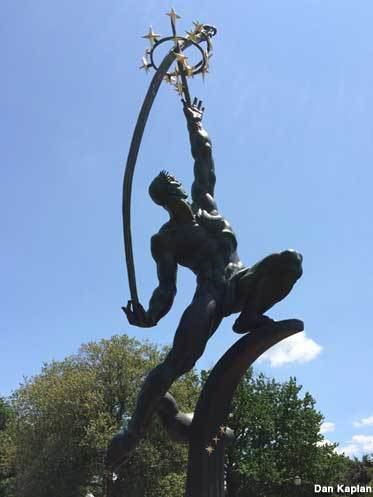Owner New York City | Website Official website Created 1964 Year 1963 | |
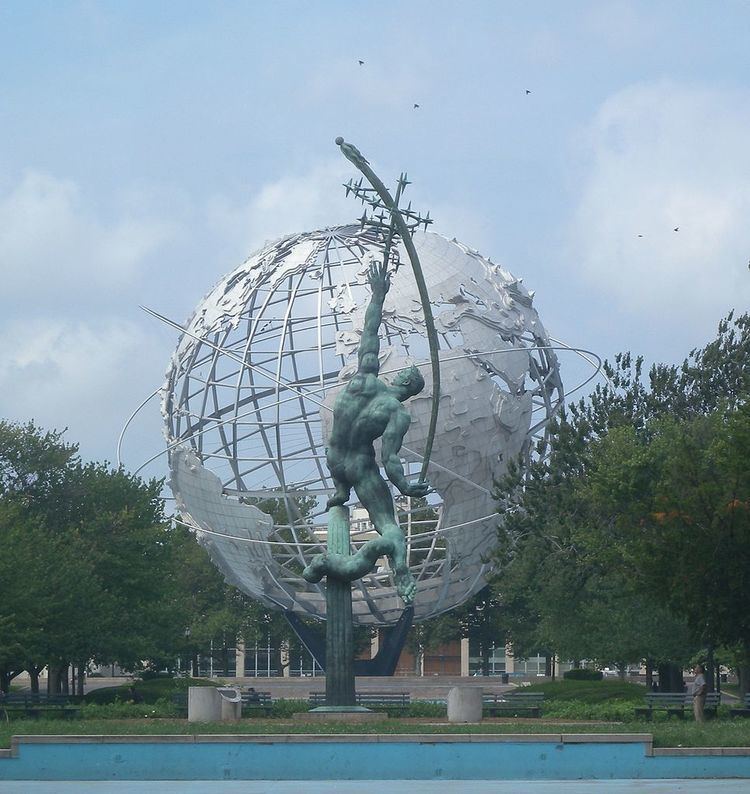 | ||
Dimensions 43 feet (13 metres) high Location Flushing Meadows–Corona ParkQueens, New York City, New York, United States Similar The Special Warfare, George Washington, Boy Scout Memorial | ||
Drone flight at the rocket thrower statue and the world fair monument the unisphere in nyc
The Rocket Thrower (1963) is a bronze sculpture by American sculptor Donald De Lue. Created for the 1964 New York World's Fair, it is located in Flushing Meadows–Corona Park in the Queens borough of New York City, in the U.S. state of New York. De Lue was among a total of five sculptors who would create pieces for the fairground. He was contracted in 1962 for the amount of $105,000 with a deadline for completion of under six months. De Lue completed a full plaster model in 1963 at which time it was sent to Italy to be cast.
Contents
- Drone flight at the rocket thrower statue and the world fair monument the unisphere in nyc
- Rocket thrower at flushing meadows corona park
- Description
- Reception
- References
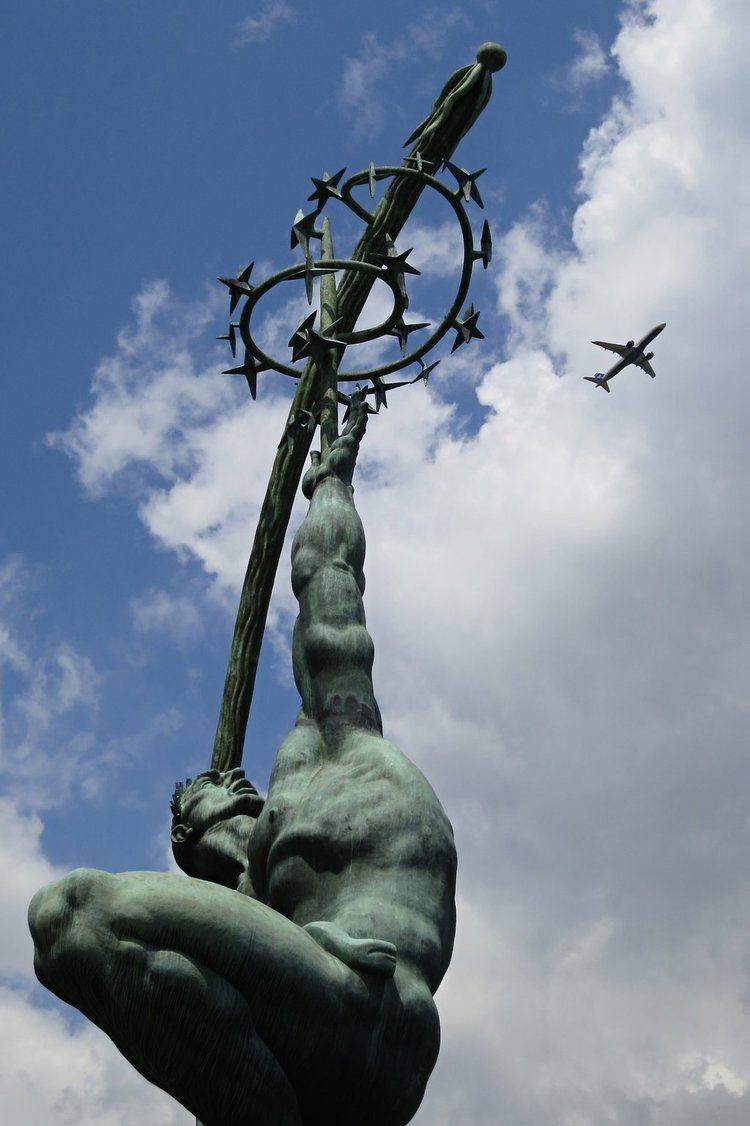
Rocket thrower at flushing meadows corona park
Description
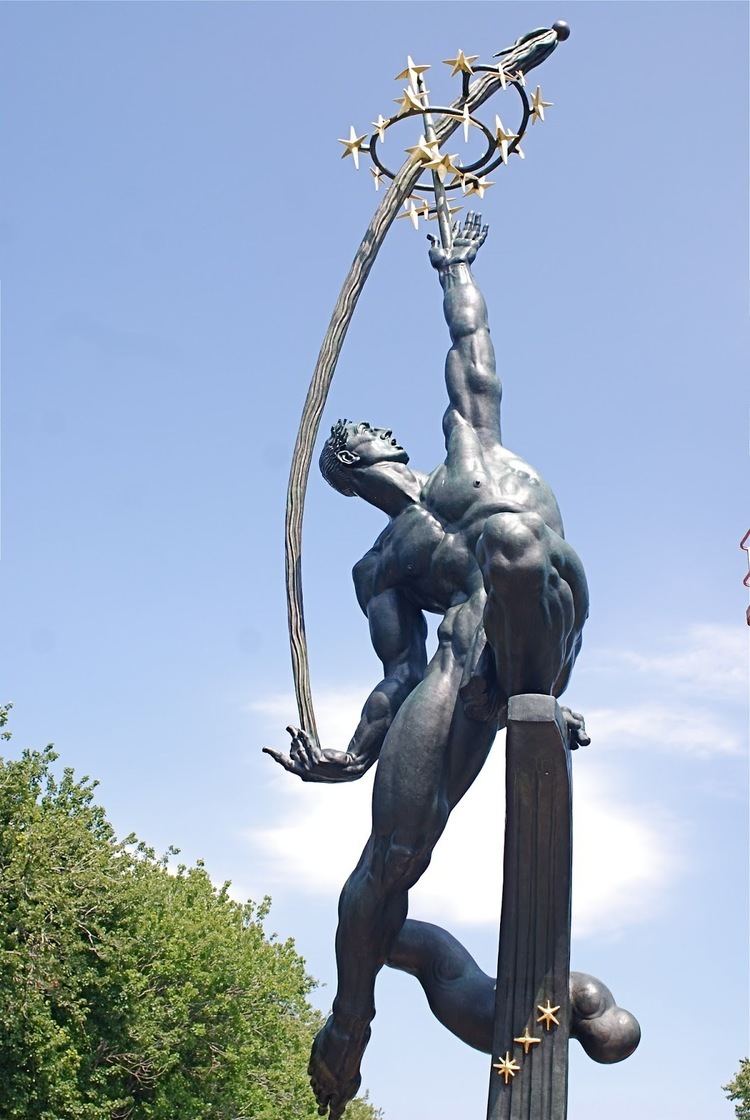
The Rocket Thrower stands 43 feet (13 metres) high and depicts an athletic and god-like man launching, with his right hand, a small sphere into the sky which leaves an arcing trail of flames behind. His left hand is raised skyward and reaches for a swirl of stars which encircle the path of the rocket. The Rocket Thrower's left leg strains and crouches with his left foot planted on an arched perch. His right leg extends out fluidly. On the front of the perch (facing the Unisphere) are three distinct stars arranged in an angled line across its short width.
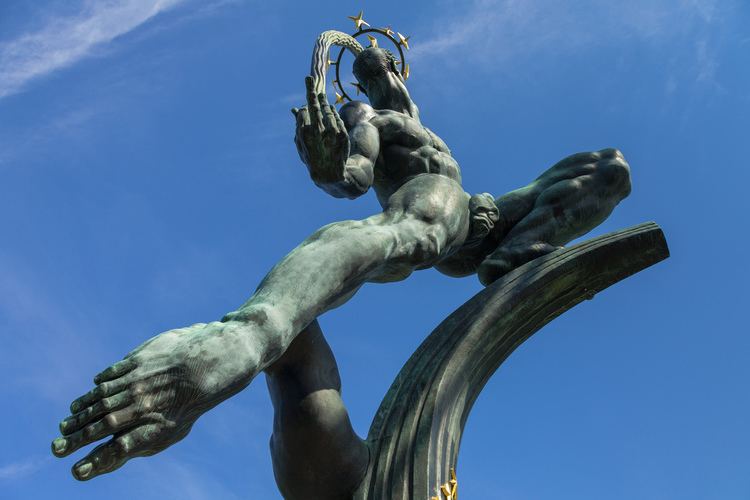
Over time the statue has been affected by corrosion and the structural integrity has diminished. One arm was repaired in 1989. The statue was significantly restored in 2013.
Reception
When released, the critics of the time had mixed reviews of the work. De Lue explained the work as "the spiritual concept of man’s relationship to space and his venturesome spirit backed up by all the powers of his intelligence for the exploration of a new dimension." However, The New York Times art critic John Canaday described it as "the most lamentable monster, making Walt Disney look like Leonardo Da Vinci."
